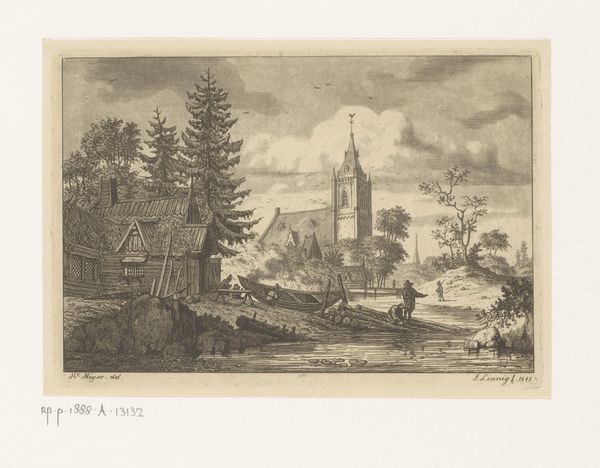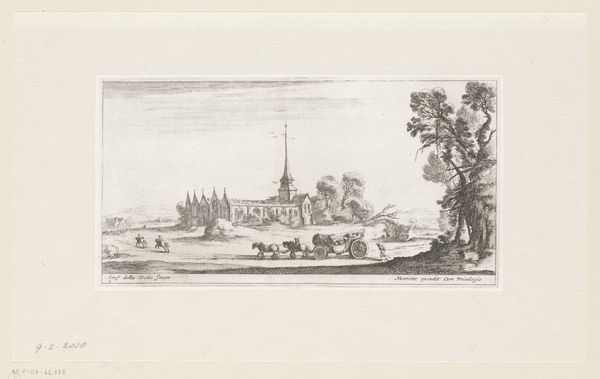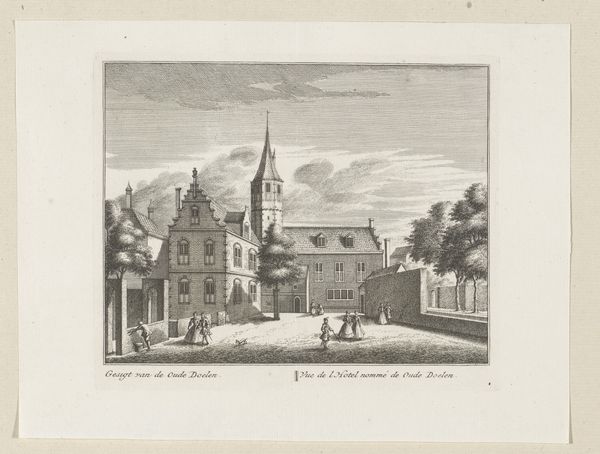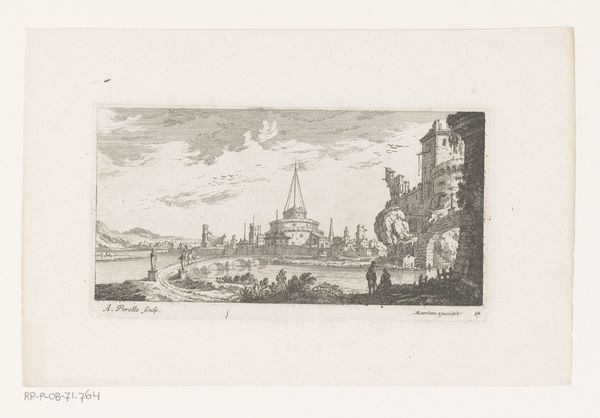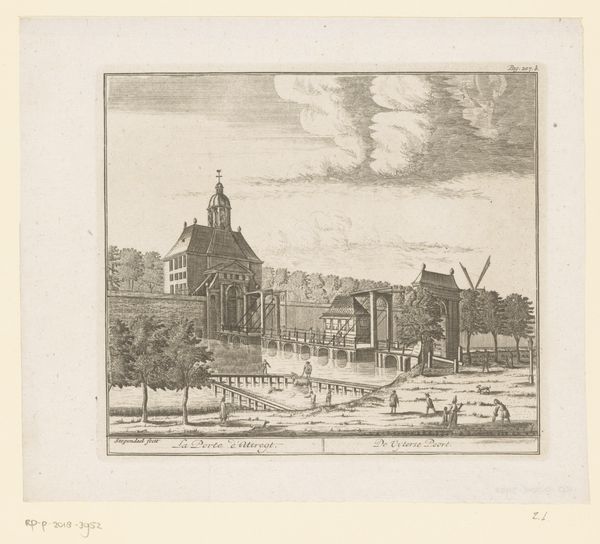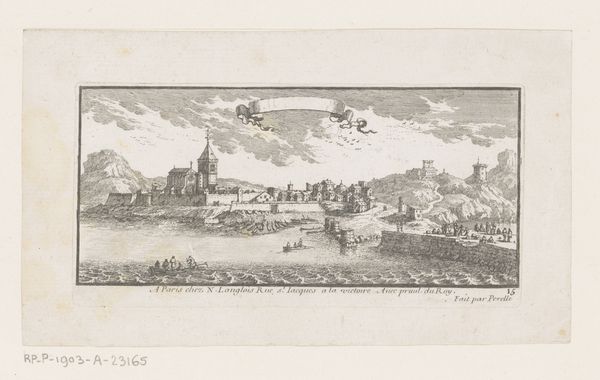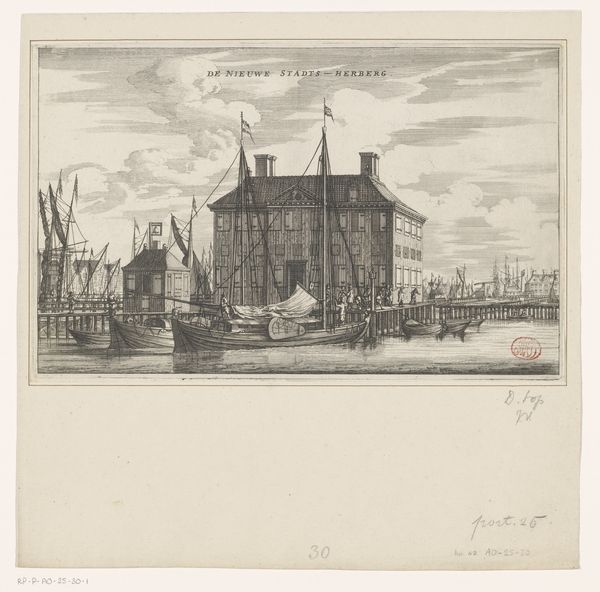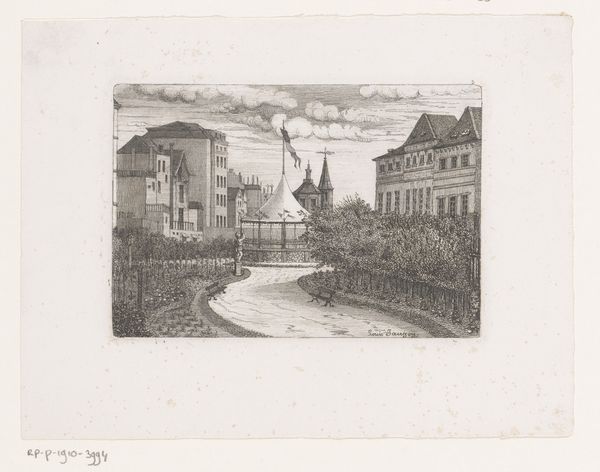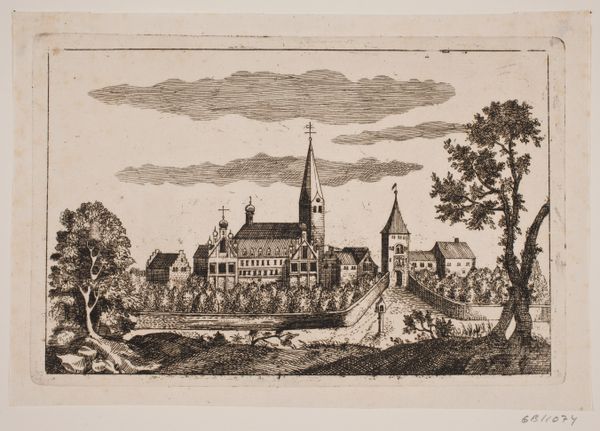
drawing, print, etching, paper, ink
#
drawing
#
art-nouveau
# print
#
etching
#
landscape
#
etching
#
paper
#
ink
#
cityscape
Dimensions: height 213 mm, width 254 mm
Copyright: Rijks Museum: Open Domain
Curator: This is "Stadhuis te Veere," an etching by Wijnand Otto Jan Nieuwenkamp, dating from about 1902 to 1905. Editor: It evokes such a specific feeling, a kind of nostalgic solemnity. The monochromatic palette emphasizes the geometric details and layered textures of the buildings. Curator: The linear quality is quite striking. Note how Nieuwenkamp has delineated every shingle, every brick, defining spatial relationships. He uses precise linework to build up textures within the townscape. Editor: But I think we have to also acknowledge the work's positioning of a lone female figure. How might we interpret this image in light of contemporary dialogues around female autonomy in early 20th-century Dutch society? Veere had a rich mercantile history, how are those class structures also made visible here? Curator: I concede that element is part of the work’s narrative. The placement of the woman helps guide the viewer’s eye. And it would be difficult not to consider how the work reflects the Dutch Art Nouveau style popular at the turn of the century—a movement rooted in societal critique. Editor: Absolutely. We see here a negotiation between the desire for aesthetic beauty and the underlying social realities. It almost seems Nieuwenkamp wants the viewer to question how progress intersects with tradition in this setting. The work is self-aware of these paradoxes. Curator: I find the composition is also quite complex, even playful. The ornamental border encloses a cityscape dominated by the Stadhuis' tower. See how it both punctuates and divides the landscape! Editor: True. But consider too that the building is at once monumental, imposing, and emblematic of civic authority, and this reinforces power dynamics embedded in this cultural space. Curator: Ultimately, what I take away is a real interplay between meticulous rendering and expressive license. Editor: And I leave thinking about how our contemporary gaze interacts with the image’s representation of women, of progress, and the built environment.
Comments
No comments
Be the first to comment and join the conversation on the ultimate creative platform.

